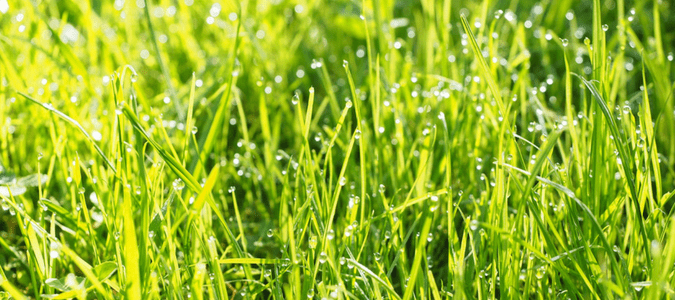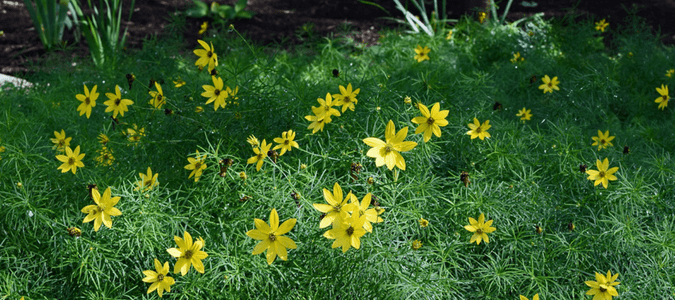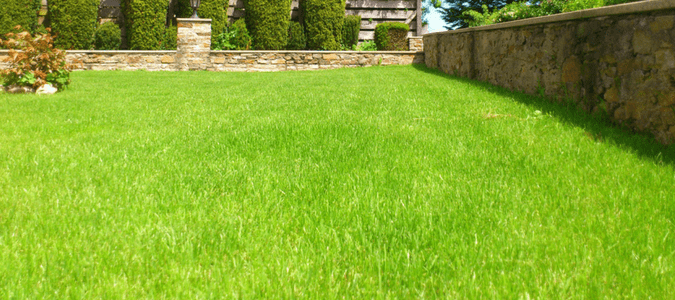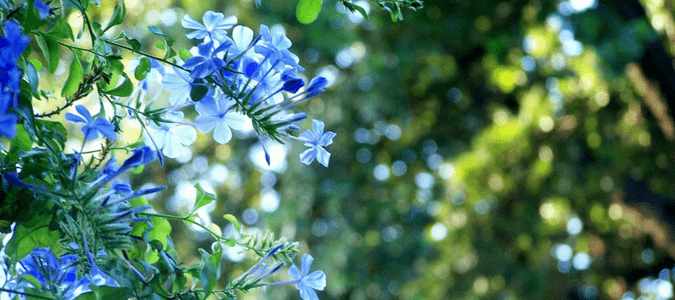
As we all know, the official start to summer is in late June.
The truth is, homeowners in Texas and other southern states know that temperatures can start inching up in April or May, depending on the year.
Because of this, many people wonder when and how to adjust their lawn watering schedule to ensure that grass and plants survive our dry and hot summer months.
Do you water a little bit every day? Water only once a week, but leave the sprinklers on for a long time to let the water really soak down? Forgo watering altogether because you had a rainy spring and your plants are looking great?
Then, you may wonder when exactly to set your sprinklers. What time should you water your lawn, if and when you do?
Maybe you have been inconsistent in your watering from year to year, and it’s just not working. Perhaps you have a water-logged yard or find yourself dealing with yellowish-brown patches. Neither of these scenarios is ideal. What should you do?
Let’s talk about how often to water your lawn in summer, how long to water your plants, what time of day is best for summer watering and other considerations to keep your outdoor spaces happy and healthy throughout the hottest time of the year.
How Much Water Does My Lawn Need?
Many homeowners aren’t exactly sure how much water is necessary to keep plants thriving during the summer. Here’s the short, frustrating answer: it depends.
What factors dictate your summer water requirements?
A few variables are your soil type, grass type and how much shade your lawn gets.
Generally speaking, lawns with more shade or clay soil don’t need as much water. However, if your soil is porous and sandy, your lawn will probably need more water.
You can determine what kind of soil you have in your lawn by doing a test. There are a number of ways to do this, but Texas A&M will test your soil for no charge if you send in a sample.
Want a ballpark figure, just to get an idea? Most lawns need somewhere between three-quarters to one and a half inches each week to stay green and healthy.
Now, an even more important question: what does that mean in terms of how long and how often you should water?

How Long Should I Water My Lawn?
If you want the most accurate answer for how long you should be setting your sprinklers to run, you can follow these steps:
- Put some small cans out on your lawn in each watering zone.
- Run your sprinklers in each zone for 15 minutes.
- Measure the water depth for each zone by checking the amount of water in the cans.
- Multiply that number by four to determine the hourly precipitation rate. For example, if you have one and a half inches of water, you would multiply that number by fifteen to get 6 inches per hour.
- Select the station that’s closest to you on Texas A&M’s online tool.
- Select “Home Owner” on the next screen.
- Fill out the “Home Owner Calculator” that pops up. For Step 3, use the hourly precipitation rate you measured using your cans.
- Hit “Calculate” and you will be given the total run time and the run time per irrigation station, depending on how many times per week you plan to run your sprinklers.
Want an example?
Let’s say you have a lawn that receives full sun, has St. Augustine grass and got very little rainfall in the last week. Using the weather evapotranspiration data in the online tool, you would need to run your sprinklers for a total of 41 minutes each week. So, if you water twice a week, that would be 21.5 minutes each time (the tool rounds up).
Again, this watering time will differ based on your area, grass type, soil and so on. If you have a summer thunderstorm or an extended period with no rain, you may need to adjust your watering time. The general goal should be to soak the soil in your lawn somewhere between four and six inches deep each time. This allows moisture to penetrate all the way down to the end of the roots and encourages the roots to dig down deep in their search for water. Watering deeply and establishing a healthy root system will make your lawn and plants stronger and more resilient.

Best Time To Water Grass In Texas
Now that you know how long you should water your lawn and plants, it’s time for a question that is almost as important: what time of the day should you start watering?
Why does this matter?
When you water matters because heat will cause moisture to evaporate. If you water during the day, when the Texas sun is beating down like a giant oven in the sky, a decent portion of that water isn’t going to get to the plants. In other words, it’s a waste of water and money, and your lawn and plants aren’t benefiting as much as they should.
Maybe you think, I’ll beat the sun by watering at night. Then my plants get all the water. No waste!
Unfortunately, there is a problem with that strategy. If you start watering your lawn at night, there’s absolutely no evaporation. That means your plants will get wet and stay wet. If this happens, your plants are more susceptible to all kinds of diseases.
So, you’re trading off not allowing enough water to get to them for the fairly strong possibility that you’ll, essentially, make your plants sick.
That doesn’t seem like a great tradeoff, does it?
Luckily, there is a “best of both worlds” solution: water in the early morning.
When you set your sprinklers to run early in the day, you minimize evaporation, since the sun isn’t at full strength yet. The water can soak down into the soil, and your plants can drink their fill.
Watering first thing also ensures that your plants won’t just be sitting there wet for hours at a time. Once the sun really starts blazing by mid-morning, it will dry up any water left on your lawn.
So, is that all you need to do to ensure your grass stays green all summer long?
Not quite.

How To Keep Grass Green In Hot Weather
Proper watering is absolutely needed to have a green, healthy lawn, but it’s just part of the equation. There are a few common mistakes homeowners unknowingly make that hurt rather than help their landscape.
Don’t Mow So Short
Specific types of grass do better at different heights. St. Augustine prefers to be somewhere between two and four inches high. Zoysiagrass is best between three-quarters of an inch and two inches. Bermudagrass should be between three-quarters of an inch and one and a half inches.
The main overall rule is to never clip off more than a third of the length of your grass.
Why is taller grass better? Because the top portion protects the bottom portion from burning in the sun.
Don’t Cut So Often
The more frequently you cut your grass, the more stress you put on it. Obviously, you need to mow if the lawn is growing quickly. But you should be able to stick to weekly—and, in some cases, bi-weekly—mowing. That’s less time spent out in the hot sun, so that’s a win-win!
Use (The Right) Fertilizer
Different types of grasses and soils will do better with different types of fertilizer mixes. That being said, the best recipes for continuous green growth is to fertilize every month or two and apply about a half a pound to one pound of nitrogen for every 1,000 feet.
Stay Vigilant Against Bugs
Insect and bug pests can absolutely destroy your lawn and plants if you’re not careful. If you want to keep your grass and plants green and lush, watch closely for signs of various lawn bugs and take the appropriate measures to control them before they take over.
Leave Your Clippings In Place
Some people remove their grass clippings because it makes the lawn look “cleaner”. This isn’t the best thing for your yard if you want to keep it healthy. Why? Your clippings will break down and provide nutrients for the soil and plants.
Some people like to mulch instead of doing this, but it’s really up to you. Just make sure you’re not removing and tossing clippings and leaves. Your lawn and plants need them, and your city would prefer to keep these items out of a landfill!

Best Time To Water Plants In Hot Weather
So, we spent a lot of time talking about how and when to water your lawn, but what about your plants? There are differences, and they largely depend upon the type of plant you’re growing.
How do you know when to water?
The best way to gauge if a plant is thirsty is to check the soil near the plant in question. Ideally, you want the soil to be moist at least six inches down, and up to 12. If this is the case, there’s no need to water right then. If, instead, the soil is dry, add water until the soil is moist. You can test how far down the moisture extends with a spade or a soil moisture sensor.
One thing to keep in mind is that depending on the type of soil you have, it can take a fairly long time for the water to penetrate as deeply as it needs to—hours, in some cases.
When you do water, remember that it is pointless to water the leaves of a plant. In fact, if the water doesn’t evaporate quickly, you put your plant at risk for disease. Instead, focus on the root zone and only the root zone.
One rule of thumb that is the same for both plants and lawns: the time of day to water. You want to do water in the early morning for all of the reasons we discussed above.
ABC Can Give Your Lawn The TLC It Needs
Homeowners in Texas have been trusting the lawn care experts at ABC Home & Commercial for generations. Our pros know all the tips and tricks you need to make sure your lawn and plants stay green and lush all year long—even through our hot, humid summers. Our experts can help with mowing, landscaping and tree care so that you can spend more time enjoying your beautiful landscape.
